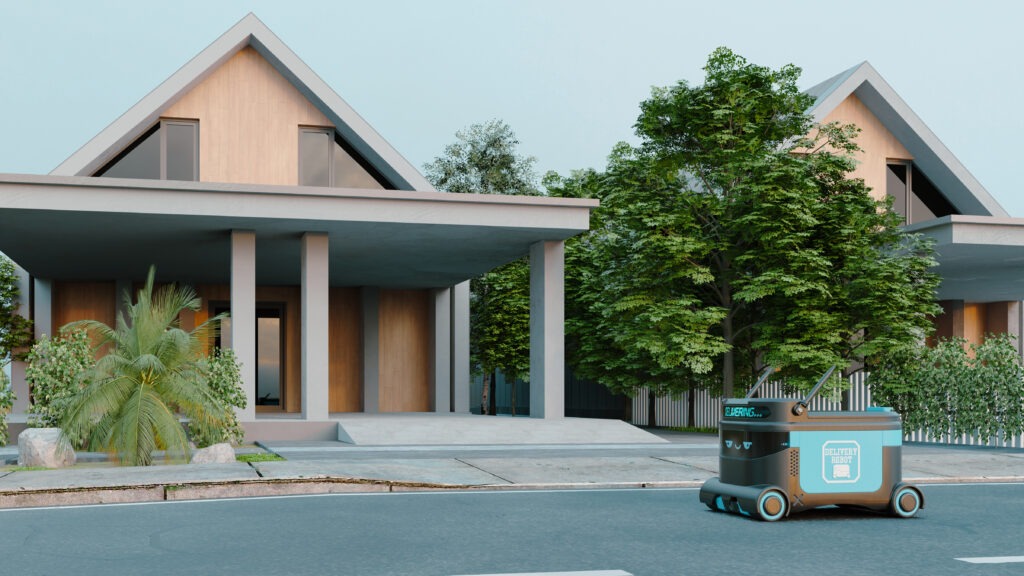
As e-commerce continues to grow, shipping and delivering parcels have become more critical than ever. Companies are looking for ways to increase efficiency and reduce costs, and one way they are doing this is through the use of robots and machines. These technologies are transforming the way we ship and deliver parcels, making the process faster and more efficient. In this article, we’ll take a closer look at some of the robots and machines that help in shipping and delivering parcels and the benefits they provide.
Autonomous Delivery Vehicles
Autonomous delivery vehicles are becoming increasingly popular in the shipping industry. These vehicles are designed to transport parcels from one location to another without human intervention. They can operate on roads, sidewalks, and even in the air, making them highly versatile.
One company leading the way in this technology is Starship Technologies. They have developed a fleet of autonomous delivery robots that can deliver parcels within a radius of a few miles. These robots are equipped with cameras and sensors that allow them to navigate streets and sidewalks and avoid obstacles. They can carry up to 20 pounds of parcels, and customers can track the progress of their delivery through a smartphone app.
Automated Sorting Machines
Sorting parcels is a time-consuming process, and it can be challenging to do it efficiently without errors. That’s where automated sorting machines come in. These machines can sort parcels quickly and accurately, reducing the need for human intervention.
One company that provides automated sorting solutions is Vanderlande. They offer a range of automated sorting machines that can sort parcels based on size, weight, destination, and other factors. These machines use advanced scanning technology to identify parcels and sort them into the correct bins. They can handle a high volume of parcels, making them ideal for large-scale shipping operations.
Automated Guided Vehicles
Automated guided vehicles (AGVs) are another type of robot that is becoming popular in the shipping industry. These vehicles are designed to transport parcels within a warehouse or distribution center. They can be programmed to follow a specific path, making them highly efficient.
One example of an AGV is the Kiva robot, which is used by Amazon. These robots can move shelves of parcels around the warehouse, bringing them to human workers who then pick and pack the parcels. The robots can navigate around obstacles and communicate with each other to avoid collisions. They are highly efficient and can increase productivity in a warehouse by up to 80%.
Drones
Drones are becoming increasingly popular for delivering parcels, particularly in rural areas. They can fly over obstacles such as traffic and can deliver parcels to remote locations.
One company that is leading the way in drone delivery is Wing. They have developed a fleet of drones that can deliver parcels up to 3.5 pounds. The drones fly to the customer’s location and lower the parcel to the ground using a winch. The process is highly automated, and customers can track the progress of their delivery through a smartphone app.
Robotic Arms
Robotic arms are being used in warehouses to help with tasks such as picking and packing parcels. These arms are highly dexterous and can pick up parcels of various shapes and sizes.
One example of a company that uses robotic arms is Alibaba. They have developed a system called Xunxi that uses robotic arms to help with the picking and packing of parcels. The system is highly efficient and can process up to 1 million parcels a day.
Benefits of Robots and Machines in Shipping and Delivering Parcels
The use of robots and machines in shipping and delivering parcels provides several benefits:
- Increased efficiency – Robots and machines can perform tasks quickly and accurately, reducing the need for human intervention. This can lead to increased efficiency and reduced costs.
- Improved safety – Robots and machines can perform dangerous tasks, such as lifting heavy parcels, reducing the risk of injury to human workers.
- 24/7 operation – Robots and machines can operate continuously, allowing for 24/7 parcel delivery.
- Increased capacity – The use of robots and machines can increase the capacity of a warehouse or distribution center, allowing for more parcels to be processed.
- Improved customer experience – Robots and machines can provide real-time parcel tracking and faster delivery times, improving the customer experience.
Challenges of Robots and Machines in Shipping and Delivering Parcels
While the use of robots and machines in shipping and delivering parcels provides several benefits, there are also challenges that need to be addressed:
- Cost – The cost of implementing robots and machines can be high, and it may take some time to see a return on investment.
- Maintenance – Robots and machines require regular maintenance, and downtime can affect the efficiency of the system.
- Regulations – Regulations around the use of drones and autonomous vehicles can be complex, and companies need to ensure they are following the rules.
- Job displacement – The use of robots and machines can lead to job displacement for human workers, and companies need to consider the impact on their workforce.
Conclusion
The use of robots and machines in shipping and delivering parcels is transforming the industry. Companies are using these technologies to increase efficiency, reduce costs, and improve the customer experience. While there are challenges that need to be addressed, the benefits of these technologies are significant. As e-commerce continues to grow, we can expect to see more robots and machines used in shipping and delivering parcels.
